CHRIS BROWN (1947-2008)

** Poet, musician, translator, artist, musical instrument maker, family historian and much more...... **
Chris was born in Cardiff, S. Wales in 1947 in St. David's Hospital which used to be the Workhouse in earlier days. So of course Chris being Chris he would often say he was born in the workhouse! He was brought up on the Ely council estate so didn't grow up in a privileged atmosphere. He seems to have always been an original thinker with a quick and easy sense of humour and fairly early on he started to take an interest in things medieval. It's hard to imagine what his friends made of this unusual young man living on a council estate, but he always had a remarkable ability to charm people.
When he went to grammar school in the 1960s he started to learn Latin and Classics and his interest in history grew. He had an encyclopaedic memory so could easily quote from Virgil and Horace and many classical authors and also Shakespeare to the end of his life.
As a teenager he wrote quite a few ambitious literary works including a long poem about Petroclus when he was 15, then a play about Richard III in the style of Shakespeare, the year after (1965) he wrote another about the Catholic Consistory Court of France in 1600. Throughout the 1960s he wrote many original poems. Later he turned to translating Medieval Latin poems and produced several complete books.
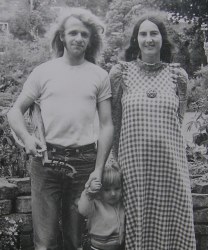
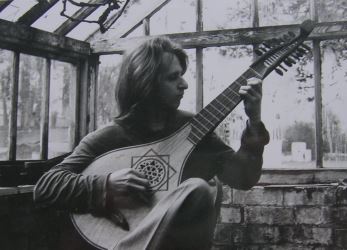
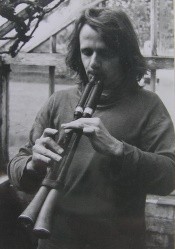
Translating was an extremely creative process with Chris. He never found it easy and would sometimes struggle for days over one word or line. But in the end he would generally come up with a solution. He always was determined to convey the essential feel, meaning and rhythm of the original poem and not just a literal translation.
I once had a fascinating conversation with him about how he saw the Latin poem he was working on at the time. He saw this particular one as an extremely complex and beautiful chest-of-drawers which had many, many drawers and compartments. He said that he often visualised the poem as an object in the real world so that he could get to grips with the essence of it.
In 1963 Chris suggested to the Curate of St Timothy's church in Ely, Cardiff that the plain window above the altar should have some decoration. His designs were eventually approved and Chris set to work in 1964 to paint the windows. You can read Chris's account of this here and see the windows as they are now here
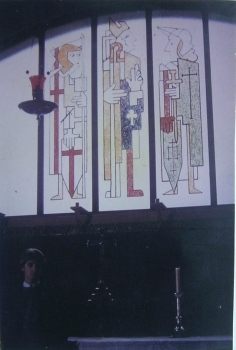
He was extremely good mathematically, so his teachers wanted him to specialise in maths and the sciences. He did this at first but his artistic creative side started to feel stifled so he shocked his teachers and parents by switching to art. This was probably a loss to the world of maths as he had an ability to work out complex mathematical problems from first principles. But Chris had a stubborn determination to do what was compelling him at any given moment.
In the 1960s he attended Cardiff College of Art and later went on to Stourbridge College of Art to study Glass and Ceramics. He had a somewhat cavalier attitude at that time to the conventions of academic research and once wrote what must have been a brilliant essay about the sculptures of Michaelangelo which he gained an A+ for, quoting references to a fictitious expert which he invented to illustrate some of his arguments. You have to remember that this was long before the days of the Internet when you couldn't easily check things like that. His tutors didn't spot the deception at all!
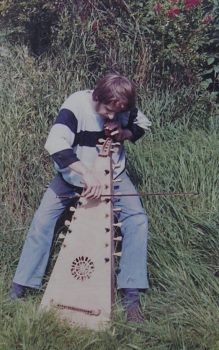
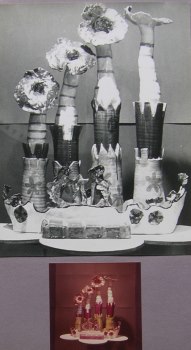
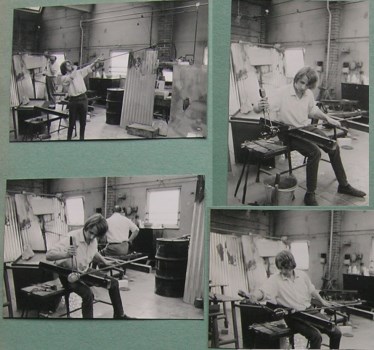
His ceramics were imaginative and quite unlike anything the other students were producing at the time, the same with his glass creations when he took to the difficult process of glass-blowing. He produced some very original pieces during his time at college and sold a few of them. Many of those that he didn't sell sadly got broken in an accident so no longer exist. Click here to see Chris's glass.
We met each other at Stourbridge College of Art. Chris was quite a striking figure in those days with his long blond hair and rather ragged clothing styled after the wandering goliards who lived for music and art and were always very impoverished.
Whatever he turned his hand to he could excel at. In the 1970s soon after we were married he started making medieval musical instruments, Many of which he sold.
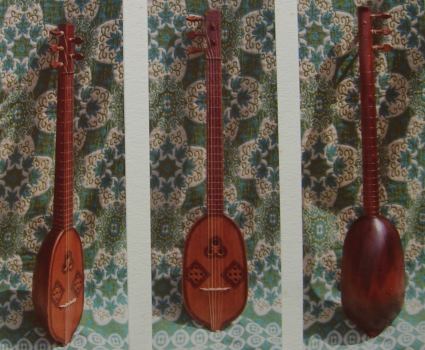
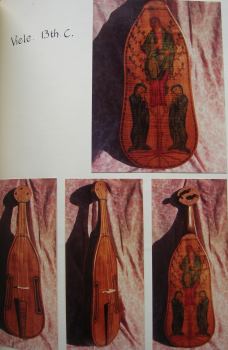
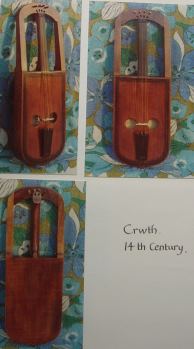
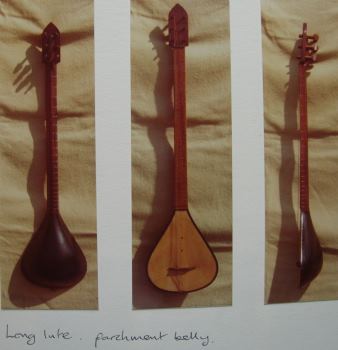
You can see more photos of his musical instruments here
Just before that time we both worked at John Perks & Sons at Lye in the West Midlands. This factory made metal parts for trucks. Chris worked in the drop-forge section which formed the metal parts from the huge drop-forge machines, I worked in the drilling department. I'll never forget those times, the work was hard but we were happy and the people we worked with were tough and down-to-earth. The drop-forge section was like entering a primitive noisy cave filled with flickering fire from the furnaces and the huge booming of the massive hammers coming down. Chris adapted to this world well and the strong arms he developed helped him later. He wrote this poem about that time.
Work at the Forge
amidst the stinging crop of swarf
the iron giants play
and toying toil.....
the booming of the lay
where children quiver in the din
recoil
in dance
and gaily mar
with scaly star
the meadow countenance.
alofting on the astral ayres
the iron giants groan
no stellar strain
but creak galactic drone:
the toil draws not their oily weep
but pain
for stars
whose glitterfoil
to bittersoil
despoils in scorching scars.
When he became an Art teacher at Park Boys' School in Dudley he often had some difficult pupils and classes to deal with as their art teacher. He was fond of starting off with a new class and giving them a little 'pep' talk about different things which ended with a 'don't mess with me' message when he stood and bent a thick iron bar with impressive ease.
Some of these pupils obviously felt Chris made a difference to them, because when they grew up we'd often have visits from former pupils.
From early in his life Chris was very musical. He could pick up any musical instrument and within a short time he'd be producing a tune on it. On rare occasions he also wrote his own musical pieces. He had an extensive knowledge of and collection of early musical pieces and was quite an authority on European ethnic instruments. As life went on his favourite instruments became the bagpipes (Northumbrian pipes and Scottish smallpipes amongst others), hurdy-gurdy and lute. He also played many medieval instruments such as crummhorn, pibgorn, crwth, amongst others.
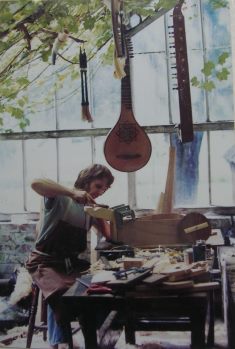
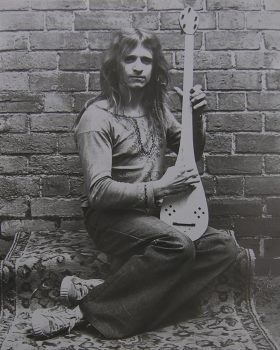
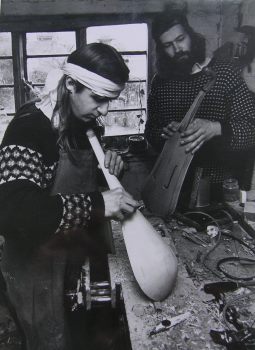
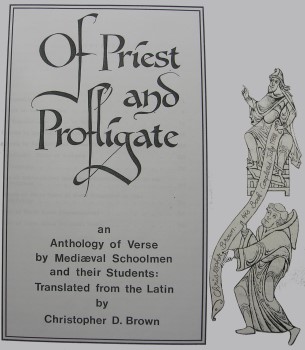
In the 1970s he met Andrew Geuter and together they formed the group "Goliard". For a few years they performed at Warwick Castle and did a concert or two at the Chapter Arts Centre in Cardiff. They also played medieval music for private parties and entertained people on a night out and famous people and some of the aristocracy, including actor Victor Spinetti and the then Duke of Wellington. They played a raw form of medieval music which they tried to perform in the spirit of the rowdy and raucous wandering goliard poets and musicians of the 11th to the 13th Centuries. Broadside Records released an album by them called "Fortune My Foe" and Warwick castle sold EPs of their music. Chris made several appearances on Midlands television as "The Hurdy-Gurdy Man" and also was interviewed by Jenny Murray on "Woman's Hour".
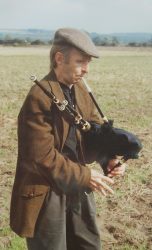
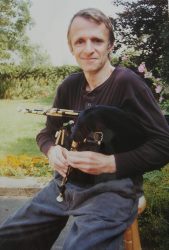
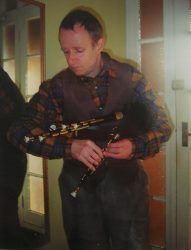
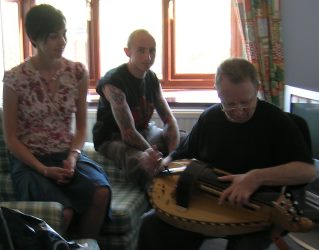
In 1980 he wrote a book for our children called "Brenda The Rough", this was loosely based on Beowulf, except that Chris's tale had a female heroine who killed the monster which was terrorising everyone. Brenda was quite a fearless and formidable girl. The story gave our children great delight at the time and I always think it was a pity he couldn't get it published.
Later we got a computer and Chris taught himself graphics programmes and started to make images and create alphabets and fonts which were one of his passions.
Many of these can be seen on this site
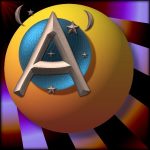 www.thefullfonty.com
www.thefullfonty.comAll the images there were designed by Chris.
In about 2005 we both became interested in tracing our family history. We'd explored this first in the 1970s but now that we had a computer we were able to access all sorts of information. Chris was really good at piecing stories and family lines together and he managed to trace several of the lines of his family back to the late 1500s and often helped me to come up with interesting information on my family too.
Chris had the quickest brain I ever encountered, this gave him the verbal ability to come up with fast and often witty responses to situations. He had a great facility for thinking up nicknames for people and could come up with sharp and sometimes cruel nicknames for a person at the drop of a hat. He also seemed to visually take in what was going on around him in a remarkable way. This led to him noticing things in a fast moving situation that others missed. The most remarkable manifestation of this was when watching a close run race on television. He never failed to pick out the true winner even when the difference was in milliseconds.
He struggled lifelong with the brittle-bone disease osteogenesis imperfecta, but despite many difficulties and due to a stoic determination, towards the end of his life kept up with playing musical instruments and writing verse almost to the end.
Chris was a talented, amazing man which is one reason I married him, but he was also a kind, generous and fascinating person and it was a privilege to have known and loved him.
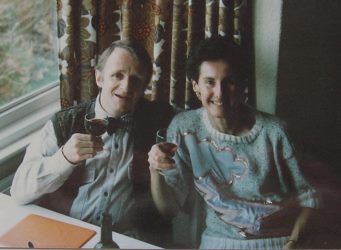
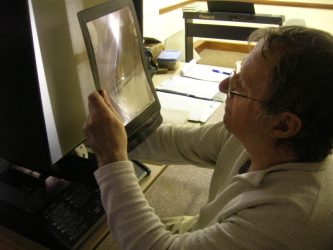
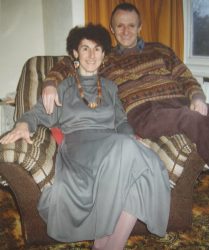
Family History